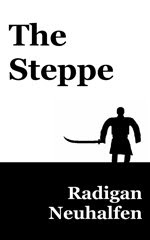“In the 1190s a young and somewhat embittered Mongol who had become khan of his people began to seek revenge for slights and injuries to them by the Tatars (another nomadic nation). Within a few years he was accepted by all the Mongol tribes as their 'universal khan,' or, in their own tongue, 'Chinghis Khan.' Mispronounced in Arabic, this name became 'Genghis Khan' to Europeans. He proved to be the greatest conqueror the world has ever seen, terrorizing Europe and Asia alike. But Chinghis also built up something much more like a true empire than any other nomad chief, even though its only capital was the felt tents of his encampment....
“The unity of Chinghis Khan's empire had given way to a loose connexion of khanates ruled independently by Mongol princes, but with much in common. A sort of Mongol federation stretched at its greatest extent over something like a sixth of the old world's land surface. Its communications were good and well policed and the Mongols made intelligent use of their conquered subjects. They enlisted them in their armies, while Chinghis used Chinese civil servants to run his taxation system and borrowed the Turkish script in order to write down the Mongol language.... The Great Khans came to see themselves as somewhat like Chinese emperors. They expected other peoples to pay them tribute, not to negotiate with them as equals, and believed they exercised a universal monarchy on behalf of their own sky god. Yet they were tolerant in religion and the diversity of belief at the Mongol court impressed Christians.”
--J.M. Roberts, A Short History of the World, 1993
Friday, March 19, 2010
Subscribe to:
Post Comments (Atom)





No comments:
Post a Comment